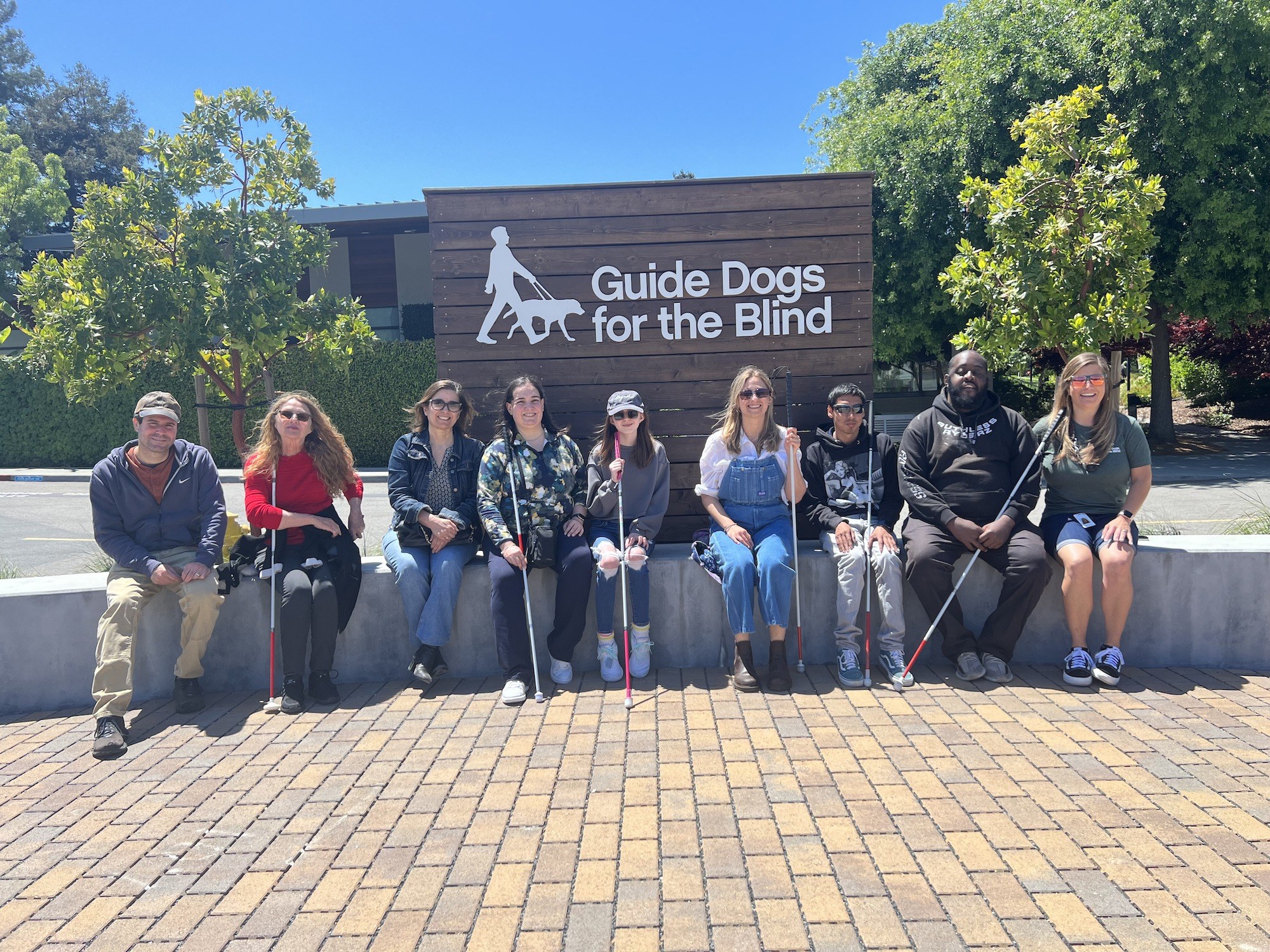At Guide Dogs for the Blind, we work hard to create inclusive and accessible spaces for all. In honor of Global Accessibility Awareness Day, which occurs on the third Thursday in May each year, we are excited to provide you with some tips to make your digital spaces more accessible.
Use Alt Text or Image Descriptions: Adding alternative text descriptions to your images on social media or in presentations allows people who use screen readers to interpret any visual cues provided in the picture. Alt text tools are available on all major social media platforms as well as email platforms. Describe the image briefly and vividly, and don't forget to describe any text that appears in the image.
Caption Your Videos: Provide captions or subtitles for your videos. This ensures your content reaches a broader audience in the format they most want to receive it. Pro Tip: Make your workplace meetings more accessible by enabling Automated Captioning on Zoom. Click here for instructions on how to use this function.
Be Mindful of GIFs and Flashing Content: Avoid using excessive flashing animations or GIFs that could trigger seizures or cause discomfort for people with photosensitivity.
Promote Inclusive Language: Choose your words wisely, embracing inclusive and respectful language. Avoid ableist or discriminatory terms and strive to create a welcoming environment for everyone. Need help to assess whether you are using inclusive language in a social media post or on your website? There are free tools that will help you review your language before posting or sharing.
Include Descriptive Hashtags on Social Media: When using hashtags, consider adding descriptive ones that give context to your post. And don’t forget to use #CamelCase to make the hashtags easier for people to read. You can do this by capitalizing the first letter of each word in your hashtag.
Provide Clear and Concise Text in Accessible Fonts: Use simple language and keep your social media messages succinct. Avoid decorative or colorful fonts as they can be difficult for people who use assistive technology like screen readers, people who have low vision, are color blind, experience visual stress, or have dyslexia, presbyopia (changes to vision that normally accompany aging), and other conditions.
Provide Transcripts for Audio Content: For podcasts, interviews, or audio clips, offering transcripts helps those with hearing impairments or individuals who prefer reading to engage with your valuable information. For an example of how GDB incorporates transcripts, visit our Central Bark Podcast page.
Seek Feedback and Learn: Stay open to feedback and continuously educate yourself about accessibility practices. We can improve and learn from one another to create a more inclusive digital space.
Be sure to follow Guide Dogs for the Blind on social media for examples of how we put these suggestions into practice. Guide Dogs for the Blind is building inclusive digital communities on Facebook, Instagram, YouTube, LinkedIn, and TikTok.




